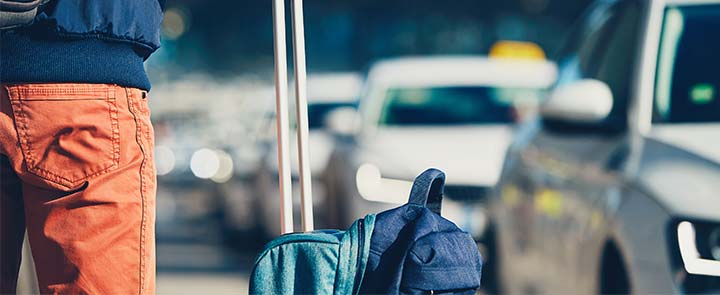
Key driving rules and regulations in Australia
- Don’t drink and drive. Random breath testing is common and penalties for driving over the limit are harsh, so it’s best to avoid alcohol completely if you’re driving. The legal limit is 0.05 of blood alcohol concentration (BAC), but in New South Wales, the limit for a hire car is just 0.02.
- Always carry your driving licence. If it is not in English, you’ll also need an International Driving Permit.
- Drive on the left. If there is more than one lane to choose from, stick to the leftmost lane, unless you’re overtaking.
- Give way to the right at roundabouts and intersections. Exceptions apply if road signs or traffic lights tell you otherwise, or other drivers have been pulled up by a stop or give way sign when you haven’t.
- Be aware of changing speed limits. Many urban areas in Australia now impose limits of 50km (30 miles) per hour in residential areas, with lower limits of 25 to 40km per hour around schools and other areas at certain times of day. Signage should tell you what the limits are and when they apply.
- Don’t beep your horn unless you’re warning other drivers of imminent danger.
- Do not park facing oncoming traffic – this is illegal and you may be fined. Instead, park on the left-hand side of the road well clear of all traffic.
- It is illegal to use a mobile while driving. You can only make or receive a call, or use the MP3 function on the phone, if the phone is in a mobile phone holder.
- Also note that in some states it is illegal to do a U-turn at a traffic signal.
Driving safely in Australia
Be aware of long distances
- Australia is a vast country and distances between towns can be huge – for example, it is 964km between Sydney and Brisbane and 2,695km between Adelaide and Perth. If you are travelling a long distance by car, always make sure you are well-stocked on fuel, food and water, as services stations and shops can be few and far between
- You can use a fuel map to see where petrol stations are on your route (App Store / Google Play). Note these are self-service: fill up your car, then go and pay in person. In remote areas they are often cash-only.
- Take basic camping gear – blanket, small gas-fire heater, headlights, a warm jacket, torch – plus some basic tools and a puncture repair kit, in case your car breaks down in the night.
- In the heat and humidity, help avoid fatigue by talking a 15-minute rest every two hours. Plan your route in advance so you can see suitable rest points such as truck stops and revival points
Take plenty of fresh air during your breaks – get out of the car, stretch your legs and rehydrate. Or simply have a good nap!
- On long-distance outer roads, you may encounter multi-trailer trucks (road trains). Give them plenty of room, and if overtaking be very careful due to their extra length.
Australian road conditions and weather
Australia has some rough terrain and not all roads are sealed. If driving in remote areas ensure you plan your route to find roads suitable for your vehicle. If faced with low quality or dirt roads, make sure you have a suitable off-road vehicle and confident driving skills.
Even on paved roads, extreme weather can mean road conditions swiftly become more difficult. Be aware and ready to adjust your speed, and avoid driving into isolated areas without adequate water, supplies and planning.
Vehicle passenger safety in Australia
- Seat belts must be worn by the driver and all passengers at all times, and it is the driver’s responsibility to ensure this is the case.
- Children and babies must be restrained in an approved car or booster seats. In some states, this applies for children up to seven years old.
Australian road signs and markings
- Remember that Australian road speeds and distances are measured in kilometres
- You must come to a complete stop at a stop sign, and if cars are coming, you must give way to them. However, you don’t have to come to a complete stop at a give way sign, provided you have slowed down, checked for oncoming traffic and found the way clear.
- Yellow and unbroken centre lines in the centre of the road indicate no overtaking.
- A no-standing (or waiting) sign means you can stop briefly to let passengers in and out of your car, but can’t park for longer than that. No stopping signs apply at all times, unless you’re dealing with a medical emergency.
- You can’t park where signs say loading zone, unless you’re collecting or picking up cargo. Large vehicles are generally free to do this without question, but you may be asked to explain yourself if you’re in a normal passenger car.
- Pedestrians at marked crossings have the right of way. Driving over a pedestrian crossing if people are already on it or waiting to cross is illegal.
- As well as people, watch out for wildlife! Wombats, koalas and kangaroos are just a few of the native and farm animals that are known to cross roadways throughout the country. Signage will generally indicate what you need to look out for where.
Road toll payments and permits in Australia
- There are toll motorways, bridges and tunnels near Brisbane, Melbourne and Sydney, some of which can only be paid electronically with a transponder fitted inside the car. You can purchase these in advance for a small cost.
- If you do not have a transponder, your number plate will be photographed and you must pay the toll within 24 hours by phone or online.
- If you drive through aboriginal tribal lands in Western Australia, South Australia and the Northern Territory, you will usually require a permit.
Driving safely in Melbourne
- Melbourne is unique in Australia in having a tram network that intersects with the road network in quite a complicated way, meaning there are some specialist rules to follow:
- Tram lanes, with overhead signs that of a tram and the word 'LANE', and a solid yellow line beside the tram tracks, cars are not permitted.
- Tram passengers have right of way when crossing the road to or from a tram. Open tram doors count as a stop sign to driver, so stop level with the rear of a stationary tram until the doors have closed.
- If the tram doors are closed, you may pass it but you cannot exceed 10km/h.
- Don’t park or stop within 20m of a tram stop.
Making a ‘hook turn’ in your car
As turning right across the tram tracks can be difficult, the "hook turn" has been invented – turning right from the left lane.
Only undertake a hook turn if you see a sign showing it is permitted: these are on the tram power lines at the intersection.
- Approach the intersection in the left lane, and indicate to turn right.
- Drive into the intersection as far left as possible, until you are perpendicular to traffic going in the direction you wish to take (which will be held at a red light).
- Once the traffic lights to your right turn green, turn to your right and continue as normal.
See more information on driving with Melbourne trams.
More information about driving in Australia
The following websites are provided by the various Australian state governments, and feature comprehensive information about road rules, tolls and traffic conditions. Some are aimed more at learner drivers, while others (such as the NSW, Victorian and Queensland sites) have specific sections designed for tourists.
- Roads and Traffic Authority, NSW
- VicRoads (Victoria)
- Queensland Transport: Driving with a foreign licence
- Road Safety (South Australia)
- Tasmanian Road Rules
If you wish to hire a vehicle in Australia, you must be at least 21 years old.
Do you need to make a claim?
If you’ve suffered damage to or loss of your hire vehicle due to theft, and you’ve purchased an insurance4carhire hire car excess insurance policy, we’re ready to help.
Related Guides

A Guide to Car Hire Costs
We like to think our car excess insurance is nice and straightforward. Your car rental agreement, however, might not be so easy to understand. With this in mind, we’ve put together a guide to car hire costs.

A Guide to Car Hire from the Airport
There are thousands of car rental desks across airports round the world, competing against each other in small spaces. In this guide, we’ll explore whether it could be more beneficial to leave the airport before hiring a car for your trip.

Hot Weather Driving Tips
Long sunny days and heatwaves can provide the perfect opportunity to get out on the road, but there are a number of things to consider before heading out into the sun.


